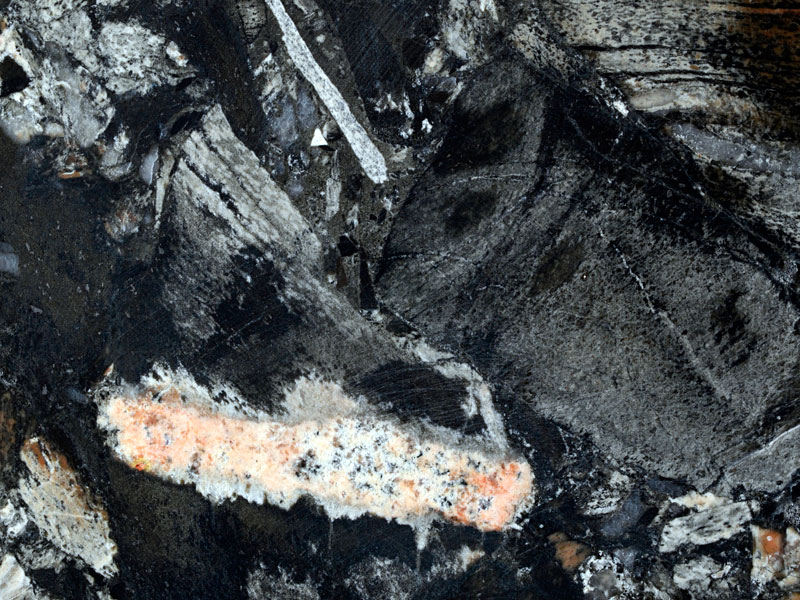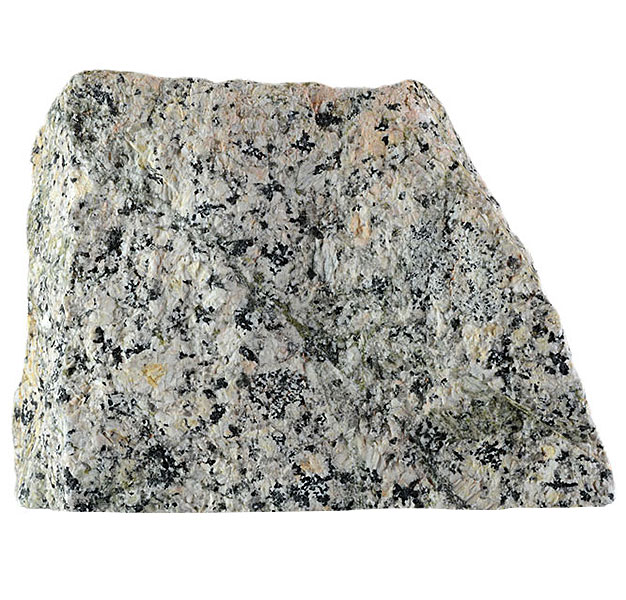
Fact sheet
The Wheal Remfry china clay pit lies at the western end of the St Austell granite, Cornwall and it is thought that granite lies not far below the base of the pit. The clay pit yields white clay suitable for use in the ceramic industry rather than the more refined clays used in paper making. This explosion breccia comes from a large exposure at the western end of the pit, and demonstrates the extensive hydrothermal activity and very high quantities of hot fluids that passed through the rocks. This rock was once sediment but was fractured by high pressure fluids.
In thin section the rock is dominated by fine-grained bands of tourmaline and quartz that have replaced the original detrital minerals of the sediment. At this scale, the rock consists of a series of fragments welded together and metasomatised by the fluids.
The United Kingdom Virtual Microscope (UKVM) collection consists of igneous, sedimentary and metamorphic rocks from around the UK.
It is intended as a teaching resource, helping to tell the story of the common rock types and how they form, and reflecting the history of the UK at the margins of the continent of Europe. The collection is a series of teaching sets, for example igneous rocks from the North Atlantic Igneous Province and SW England; high-temperature metamorphic rocks from Scotland and low-temperature metamorphic rocks from Wales; and sedimentary rocks, including English limestones and sandstones.










